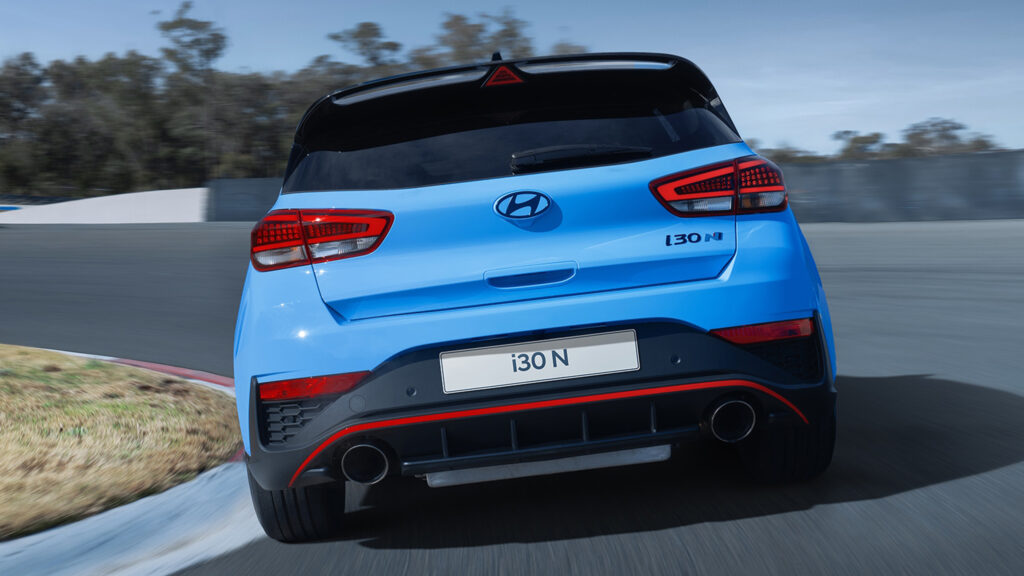- Hyundai has not made any modifications to the car’s 2.0-liter turbocharged four-cylinder.
- Minor changes have been made to the car’s exterior, including revised 19-inch forged alloy wheels.
- All i30 N hatch models now come standard with the same digital instrument cluster as the i30 Sedan N / Elantra N.
The thrilling Hyundai i30 N hot hatch has been facelifted for the second time, but sadly, it will remain a forbidden fruit in the United States. What upgrades will buyers in other markets enjoy for 2025? Let’s dive in.
At the front, Hyundai’s engineers have had some fun with the shape of the front air intakes, making them look a little sharper and adding bright red accents. The design of the lip has also been altered and includes a combination of matte grey and red accents. Additionally, the front grille has been redesigned and features Hyundai’s new flat-look badges in matte black.
Read: Hyundai Patent Could Make Fancy F1-Inspired Steering Wheels More Affordable
All 2025 i30 N models also come standard with revised 19-inch forged wheels with a matte grey finish.
The interior has also received a few minor changes. These include the same fully digital 10.25-inch instrument cluster as the i30 N Sedan, now joining the existing 10.25-inch infotainment display. The optional suede, leather, and Alcantara N bucket seats have also been refreshed, and there’s a new gloss black area around the shifter. A red NGS button to enable the ‘N Grin Shift’ boost function is now added to the steering wheel.

In markets like Australia, the new model also includes the Hyundai Bluelink connected car services program. This adds Automatic Collision Notification, Emergency Call function, Connected Routing with live traffic updates, Alert services, and over-the-air software updates. The Forward Collision-Avoidance Assist has been updated with new front radar sensors and a camera mounted behind the windshield. The 2025 i30 N comes standard with Intelligent Speed Limit Assist, Rear Occupant Alert, Driver Attention Warning, and Multi-Collision Braking.
No changes have been made to the powertrain of the i30 N, but it didn’t need any. Power continues to come from a 2.0-liter turbocharged four-cylinder with 206 kW (276 hp) at 6,000 rpm and 392 Nm (289 lb-ft) of torque between 2,100 and 4,700 rpm. The hot hatch continues to be offered with a six-speed manual and an eight-speed dual-clutch automatic transmission.













